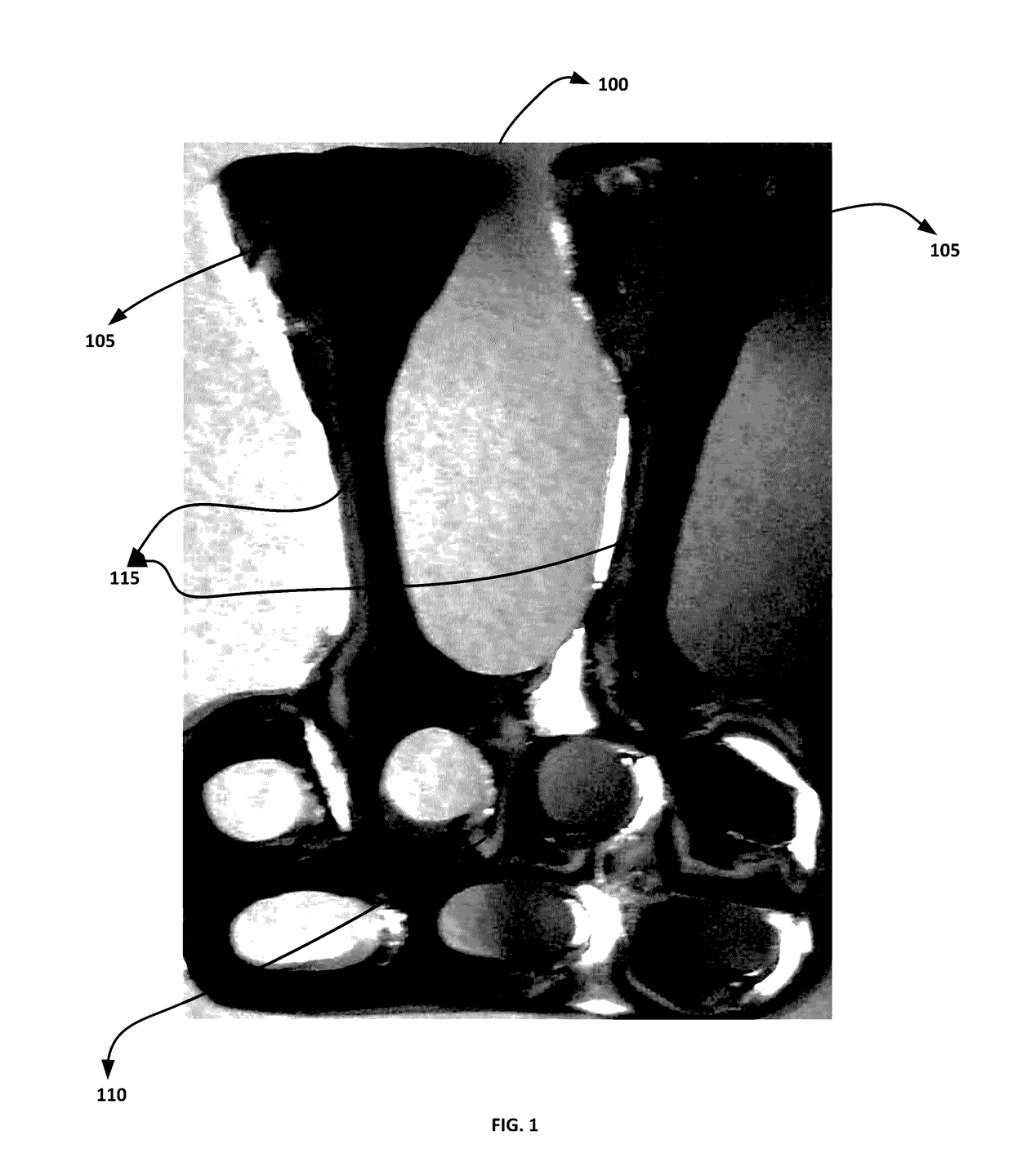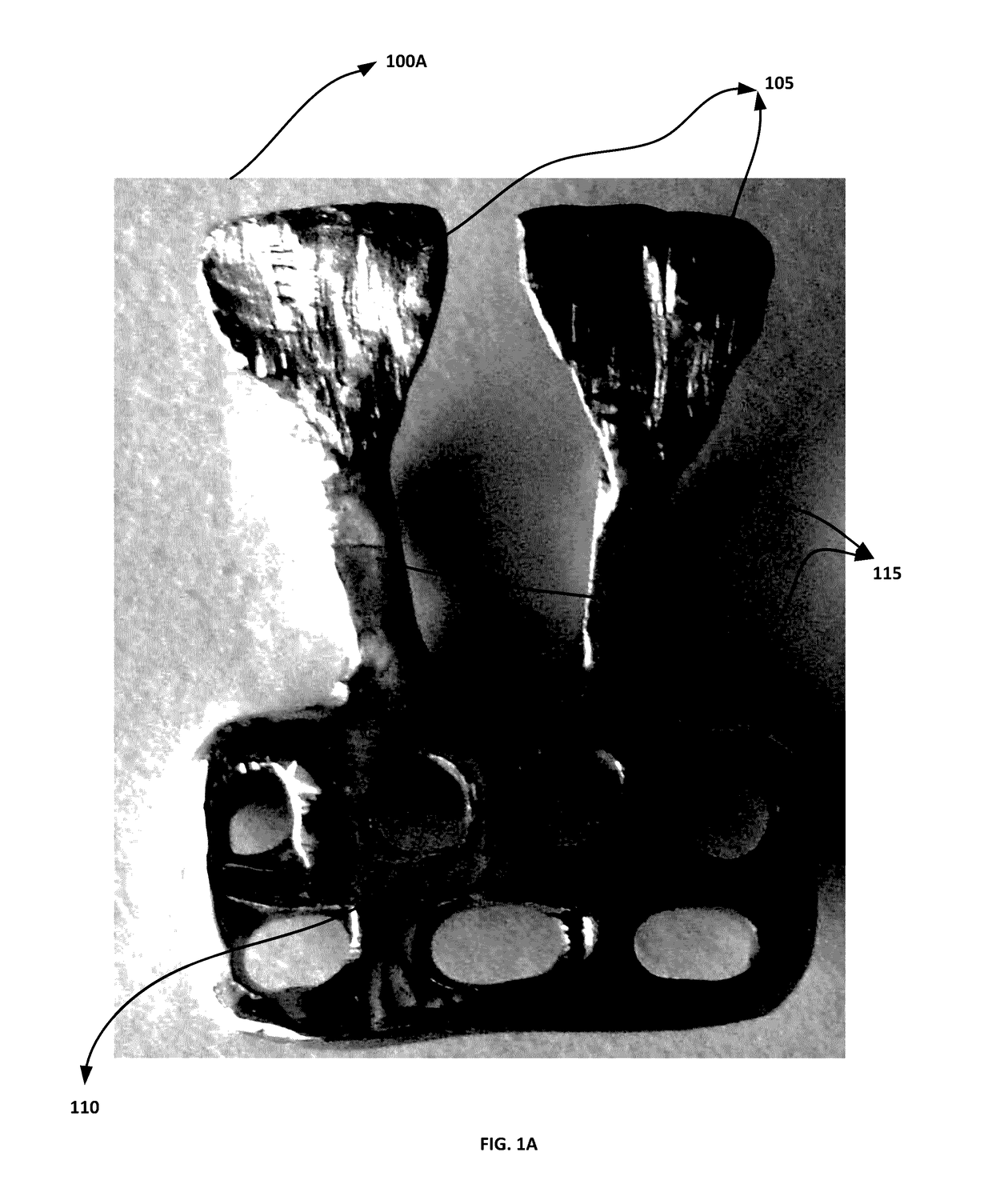Orthodontic appliance for distalization and/or space closure
a technology for distalization and space closure, which is applied in the field of orthodontic appliances for distalization and/or space closure, can solve the problems of inability to control the moments in all three planes of space, inability to precisely behave, and inability to generate undesirable moments, etc., to achieve excellent anchorage control, shorten the duration of treatment, and simplify the effect of treatmen
- Summary
- Abstract
- Description
- Claims
- Application Information
AI Technical Summary
Benefits of technology
Problems solved by technology
Method used
Image
Examples
Embodiment Construction
[0031]FIG. 1 illustrates an anterior orthodontic appliance embodiment 100, according to the invention. As shown in the figure, the anterior orthodontic appliance 100 has two bonding pads 105, two vertical connectors 115 and a netted structure 110. The two vertical connectors 115 connect the two bonding pads 105 and netted structure 110. The vertical connectors 115 are in lingual and apical direction. The illustrated netted structure 110 is formed of holes for passing or engaging force delivering components. However, the netted structure 110 can be comprised of at least one of holes, hooks and stops for passing or engaging force delivering components. The use of the anterior orthodontic appliance embodiment 100 is described with reference to FIGS. 2, 2A and 2B.
[0032]FIG. 1A illustrates reverse view of the anterior orthodontic appliance embodiment 100A, according to the invention. The illustrated side of bonding pads 105 are attached to lingual side of the teeth in the anterior region...
PUM
 Login to View More
Login to View More Abstract
Description
Claims
Application Information
 Login to View More
Login to View More - R&D
- Intellectual Property
- Life Sciences
- Materials
- Tech Scout
- Unparalleled Data Quality
- Higher Quality Content
- 60% Fewer Hallucinations
Browse by: Latest US Patents, China's latest patents, Technical Efficacy Thesaurus, Application Domain, Technology Topic, Popular Technical Reports.
© 2025 PatSnap. All rights reserved.Legal|Privacy policy|Modern Slavery Act Transparency Statement|Sitemap|About US| Contact US: help@patsnap.com



